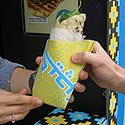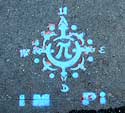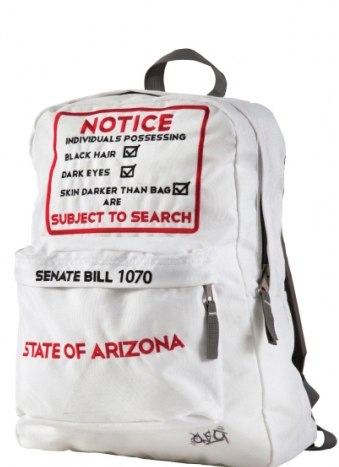product
 ”The US has sent Bahrain dozens of ‘excess’ American tanks, armored personnel carriers, and helicopter gunships. The US has also given the Bahrain Defense Force thousands of .38 caliber pistols and millions of rounds of ammunition, from large-caliber cannon shells to bullets for handguns. To take one example, the US supplied Bahrain with enough .50 caliber rounds—used in sniper rifles and machine guns—to kill every Bahraini in the kingdom four times over.“ Previously: tear gas in Egypt.
”The US has sent Bahrain dozens of ‘excess’ American tanks, armored personnel carriers, and helicopter gunships. The US has also given the Bahrain Defense Force thousands of .38 caliber pistols and millions of rounds of ammunition, from large-caliber cannon shells to bullets for handguns. To take one example, the US supplied Bahrain with enough .50 caliber rounds—used in sniper rifles and machine guns—to kill every Bahraini in the kingdom four times over.“ Previously: tear gas in Egypt.Egypt's Tears

Via Facebook: photo of a tear gas canister from a police crackdown on protesters in Egypt.
The label: “Made in U.S.A.”
One for One
- Noted previously, with every pair of shoes you purchase, TOMS will give a pair of new shoes to a child in need. As of September 2010, TOMS has given over one million pairs of shoes.
- In 2007 and 2008, under its Give 1 Get 1 program the One Laptop per Child program donated a laptop to a child in the developing world for every computer sold. 83,500 laptops were donated in 2007 and 12,500 in 2008.
- FIGS, a necktie retailer in Santa Monica donates one school uniform to a child in Africa for every tie it sells.
- For each pair of eyeglasses sold, Warby Parker donates a pair of eyeglasses to someone in need through Restoring Vision. To date, that’s almost 10,000 pairs.
- Out of Print in Brooklyn, donates one book to Books for Africa every time it sells one of its T-shirts, which feature the covers of mostly out-out-of print books.
- For every condom it sells, Sir Richard’s plans to give another condom away for free in a developing nation through Partners in Health.
- For every nutrition bar you buy from Two Degrees, they give a nutrition pack to a hungry child..
- Every time you buy a book, Better World Books will donate one to someone in need.
I heard the design process was quite contentious at the FTC before settling on the familiar motif. The yellow EnergyGuide label has been used since the 1970’s for washing machines, refrigerators, and other large appliances sold in the US but never before for electronics. By making long term costs visible at the point of purchase, this humble bit of information design has saved an enormous amount of resources over the last 30+ years. It’s also a nice nudge to manufacturers who know the information will be public.

 The results of Ann Thorpe’s design activism survey are in: ask 100 designers and get 100 different answers. But some curious trends do emerge. For instance, who knew product designers were so much more engaged than other types of designers?
The results of Ann Thorpe’s design activism survey are in: ask 100 designers and get 100 different answers. But some curious trends do emerge. For instance, who knew product designers were so much more engaged than other types of designers?Update 12/21/10: Ann has posted a list of respondent suggestions for learning more about design activism.
Influencing Behavior through Design
“All design influences our behaviour, but as designers we don’t always consciously consider the power this gives us to help people, (and, sometimes, to manipulate them).”
Dan Lockton has posted a fantastic resource, Design with Intent. Formerly known as Architecture of Control, this book of cards features 101 design patterns for influencing behavior through form, feedback, and interface. The techniques span media from architecture and product design, to signage, interaction and graphic design and influence users by making choices easy, difficult, confusing or fun in sometimes subtle or provocative ways. The cards are organized by mode as follows:
You can download the complete set here. It’s a great primer on interaction design in the real world and a useful lens for looking at the politics of access and usability and the quiet frameworks of design and power that shape our daily lives.
 In June I wrote about Conflict Kitchen, a pop-up, take-out restaurant in Pittsburg that only serves cuisine from countries that the United States is in conflict with. In October, Kubideh Kitchen will go out of business and change identities to highlight and provoke discussion around Afghan culture. The organizers have started a Kickstarter campaign to raise $4,000 by the end of September. Donations will go towards the creation Bolani Pazi, which will serve Afghan food wrapped in a custom-designed wrapper printed with Afghan perspectives and opinions. Pledges of $15 or more will receive copies of the stylish (and informative) food wrapper designs from both Kubideh Kitchen and Bolani Pazi.
In June I wrote about Conflict Kitchen, a pop-up, take-out restaurant in Pittsburg that only serves cuisine from countries that the United States is in conflict with. In October, Kubideh Kitchen will go out of business and change identities to highlight and provoke discussion around Afghan culture. The organizers have started a Kickstarter campaign to raise $4,000 by the end of September. Donations will go towards the creation Bolani Pazi, which will serve Afghan food wrapped in a custom-designed wrapper printed with Afghan perspectives and opinions. Pledges of $15 or more will receive copies of the stylish (and informative) food wrapper designs from both Kubideh Kitchen and Bolani Pazi.Update 9/25/10: Success! $4,178 raised!
Subject to Search
Updates
Recent happenings on old blog posts:
|
More Public Schools: In March 2009, I wrote about The Public School a website where people propose, discuss, and coordinate free, offline classes taught by volunteers. The project has since expanded from Los Angeles to 6 more cities including New York, Paris, and San Juan. And still more coming soon! I taught a class on Mapping as Activism last month and had a great time. |

|
|
Listener Supported: In December 2008, I wrote about Spot.us, a site for crowd-funded news where anyone can pitch and help pay a journalist to produce a local story. Last week, Public Radio Exchange announced they will pick up the software to launch StoryMarket to bring the model to public radio. |

|
|
Guerilla Wayfinding in NYC: In March 2006, I proposed a compass rose stencil at the exits of New York City subway stations. Shortly after, stencils started appearing! A year later, City officials decided to implement a few test marks of their own, and I found out the idea had been proposed back in 1992. Now it’s 2010 and new compass stencils have popped up at downtown subway exits. |

|
|
The Trouble with Hippos: In February 2006, I wrote about the Hippo Water Roller, a rugged, round water container designed to be transport water on tough rural roads. Last year, Alissa Walker reported on some of the obstacles the project encountered with extended use, and when trying to scale up production. |

|
|
Public Designer: My first article for Communication Arts ran in February 2005 on citizens designing for better government. It included several examples orchestrated by Sylvia Harris. This month the AIGA published a great interview with her that’s worth checking out. Harris is a public designer if ever there was. |

|
|
Get the E out of NYC: In 2004, I wrote about New York City’s trial collection of electronic waste for recycling. On May 29, 2010, New York State decided it’s illegal to throw away your electronic waste in the regular trash. Governor Patterson just signed a producer responsibility law requiring manufacturers to pay for collection and recycling of e-waste from consumers (including individuals, schools, municipalities, small businesses and non-profits.) |

|
 “A take-out restaurant that only serves cuisine from countries that the United States is in conflict with. The food is served out of a take-out style storefront, which will rotate identities every 4 months to highlight another country.” The current iteration, Kubideh Kitchen, serves Iranian kubideh from a stylish pop-up facade. “The sandwich is packaged in a custom-designed wrapper that includes interviews with Iranians both in Pittsburgh and Iran on subjects ranging from Iranian food and poetry to the current political turmoil.”
“A take-out restaurant that only serves cuisine from countries that the United States is in conflict with. The food is served out of a take-out style storefront, which will rotate identities every 4 months to highlight another country.” The current iteration, Kubideh Kitchen, serves Iranian kubideh from a stylish pop-up facade. “The sandwich is packaged in a custom-designed wrapper that includes interviews with Iranians both in Pittsburgh and Iran on subjects ranging from Iranian food and poetry to the current political turmoil.”

